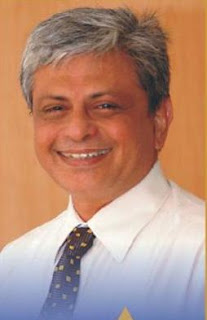Picture credit - RogerEbert
Day 51 - Decision Making Skill
30 May 2020
─
sirurp@gmail.com
My learning for the day
Today I want to summarise two movies on decision-making skills.
Movie 1 - 12 Angry men (1957)
The plot -
12 Angry men is a courtroom drama. It is a movie about how one man stuck to his decision and ultimately brought others to accept his decision.
The movie is about 12 jurors. They have to give their verdict whether the 18-year-old suspect is guilty or not in the case of his father’s death.
The first voting goes against the boy (11 say “guilty” to 1 says “not guilty”). The one man (Henry Fonda) who voted ‘not guilty’ has a doubt about the facts presented to them.
Every time he questions the evidence, the other 11 are angry; slowly with every challenge from that one man, more and more juries start changing their verdict. Ultimately giving a unanimous verdict - “Not Guilty”.
The learning by Margarita Mayo
- Speak your mind. Do not succumb to social pressure and avoid groupthink
- Do your homework and prepare in advance
- Be open to new ideas and evidence
Read more here
Movie 2 - Sully (2016)
The plot -
Three minutes into the flight, at an approximate altitude of 2,800 feet, the Airbus A320 strikes a flock of birds, disabling both engines. Without engine power and judging themselves unable to reach nearby airports, Sully (Tom Hanks) ditches the aircraft on the Hudson River. The crew and passengers evacuate without any fatalities.
The learning by Work Better
- Keep calm - Shut down all the disturbing factors and reset your mind to focus better
- Listen to advisors, but don’t let them dictate you - The job of an advisory board is to present you with their point of view. It is up to you for you to have a choice to listen to what they say, but eventually the decision is yours to make
- Question assumptions, data
Read more here
My learning so far on this topic
Day 1 post - How to Make Decisions
Day 11 post - Decision Tree Examples
Day 21 post - Edward De Bono’s Thinking tools - A.P.C. (Alternatives, Possibilities, Choices) and CAF (Consider All Factors) and a few examples of bad decision from history
Day 31 post - Two TED talks - 3 ways to make better decisions — by thinking like a computer, How to make hard choices (hard choices are precious opportunities)
Day 41 post - Two books - Predictably Irrational & The Decision Book
What is decision making?
Decision-Making is the ability to use a decision making process/ technique to arrive at a decision.
How to improve this skill?
Set a goal to become a go-to person by mastering the art and science of decision making.
Follow the LAST model to build your personal brand as a Guru of decision making.
Learn - Invest time in learning different frameworks/ models/ techniques of decision making
Apply -
Identify a model suitable to you
Create a template to document the flow of the process
Find opportunities to use the selected method/ template
Maintain record/ process flow of every important activities you did with respect to decision making
Maintain notes of your thoughts/ insights/ failures/ challenges…. to be used for sharing/ training others
Share - Share the insights captured in step 2 above in a planned manner (social media posts, blogs, videos, study notes…)
Train - Generate opportunities to train your peers and team members so that, over time, your organization benefits from your efforts
Purpose of this document
I took a 66 day challenge to study Life Skills last year (10 April 2019). To my astonishment, I succeeded in studying for 66 days one skill a day.
My objectives of learning these skills were - To strengthen my mind to face life’s challenges with ease, To use these skills in my worklife for a better performance, To use these skills in my personal life for enriching my relationships, To open new possibilities to surprise myself.
This is my next 66 day challenge (from 10 April 2020) - To share my Life Skills learning with my social media friends.
I pray that my toil helps you in your success journey.
What are Life Skills?
UNICEF defines Life skills as - psychosocial abilities for adaptive and positive behaviour that enable individuals to deal effectively with the demands and challenges of everyday life. They are loosely grouped into three broad categories of skills
- cognitive skills for analyzing and using information,
- personal skills for developing personal agency and managing oneself,
- inter-personal skills for communicating and interacting effectively with others.
Which LifeSkills are covered?
The World Health Organisation identified these basic areas of life skills that are relevant across cultures:
1. Decision-making
2. Problem-solving
3. Creative thinking
4. Critical thinking
5. Communication
6. Interpersonal skills
7. Self-awareness
8. Empathy
9. Coping with emotions
10. Coping with stress.
Some trivia
‘Life skills’ was never part of the school curriculum. WHO/ UNESCO mandated academia to teach these skills in all schools across the globe in 1993.
Different countries educate their children in these skills with different objectives
- Zimbabwe and Thailand - prevention of HIV/AIDS
- Mexico - prevention of adolescent pregnancy
- United Kingdom - child abuse prevention
- USA - prevention of substance abuse and violence
- South Africa and Colombia - positive socialization of children.
